by Luiz Menini Neto |
Work done in association with Leandro C. S. Assis (doctor's degree in course - USP) and Rafaela C. Forzza (Botanical Garden of Rio de Janeiro) |
|
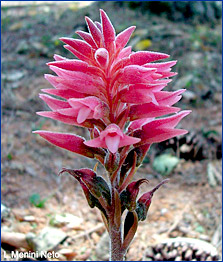 Sacoila lanceolata |
We
registered 44 species concerning 25 genera, the most part is epiphyte
in the interior and/or in the edge of the wood, in areas with variable
humidity and luminosity. Just three species occur in the transition
of the wood and the cerrado (savannah): Habenaria petalodes, Oncidium
ramosum and Sacoila lanceolata, all of them are terrestrial
and grow close to the gramineae. |
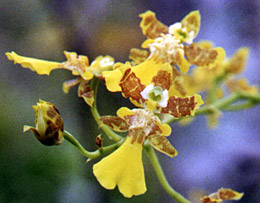 Oncidium ramosum |
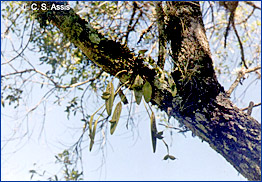 Pleurothallis riograndensis |
The most abundant species observed is, no doubt about, Pleurothallis riograndensis, forming big and gorgeous populations on the trunks of the trees at the edge of the brooks which move along the wood and Rio das Mortes. |
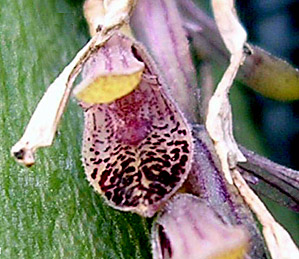 Pleurothallis riograndensis |
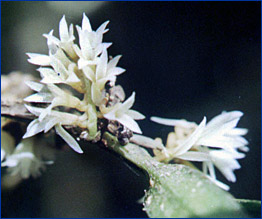 Campylocentrum robusto |
Another
species which occur in great quantity are those from the genus Campylocentrum,
covering the trunks of the trees in many places of the wood. Between the terrestrial, Oeceoclades maculata is the most common, with isolated individuals or small populations on the ground of the wood, standing out by the beautiful variegate leaves between the serrapilheira (poor and creeping undergrowth). |
On
the other hand, some species have been seen just once, in small population
or just one individual. The terrestrial were: Galeandra beyrichii,
Habenaria macronectar, H. petalodes and Stigmatosema polyaden.
|
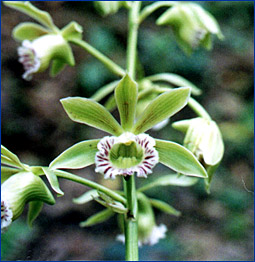 Galeandra beyrichii |
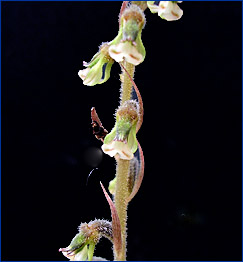 Stigmatosema polyaden |
Between
the epiphyte, we have: Capanemia thereziae, Gomesa recurva (this
one presenting a big clump in which the entangled of roots shelter an
anthill with very aggressive inhabitants), Oncidium ciliatum and
O. gardneri. |
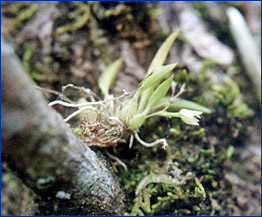 Capanemia thereziae |
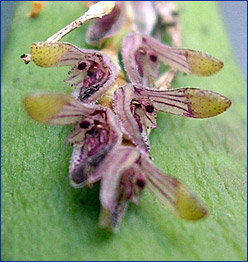 Pleurothallis riograndensis |
Bulbophyllum
pabstii
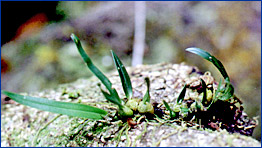
We can call the attention for the two species registered for the first time to the state of Minas Gerais: Bulbophyllum pabstii (before just registered for the state of São Paulo and Brasilia) and Pleurothallis riograndensis (before only registered for the states of Rio de Janeiro and Rio Grande do Sul) (Pabst & Dungs, 1975; Sprunger, 1996). |
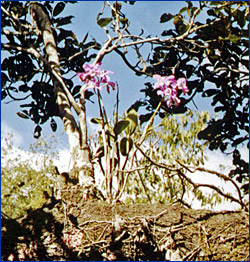 Cattleya loddigesii (habitat) |
We should point out the occurrence of Cattleya loddigesii included in the Red List of threatened species in the Flora of Minas Gerais (Mendonça & Lins, 2000), presenting many clumps on the edge of the wood. |
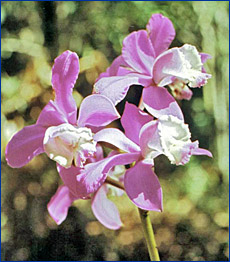 Cattleya loddigesii |
Nevertheless,
the occurrence of the some species of ornamental interest, such as:
Comparettia coccinea, Galeandra beyrichii, Oncidium gardneri, Sophronitis
cernua, besides Cattleya loddigesii itself (this one specially
vulnerable due to fact that the most part of the populations are placed
at the edge of the wood) can be menaced of extinction due to pressure
of the collecting done by the inhabitants of the surrounding area. In
a wider point of view, the other plants are potentially menaced, due
to the possible transformation of the habitat in plantation or pasturages,
which are already observed in many areas around the wood, reducing it
in speckles. In this way, the continuity of this survey should be an environmental education of the habitants of region regarding the preservation of the Mata do Bau and its jewels, in the order to let them going on embellishing the wood for long time. |
| Any
kind of reproduction (print, digital or anyone) of any type of material
of this site: texts, layout, photos, images and others - is strictly
forbidden without previous written permission of the authors. Any solicitation
or information should be done by the e-mail:
bo@sergioaraujo.com |